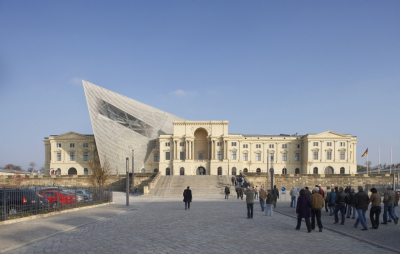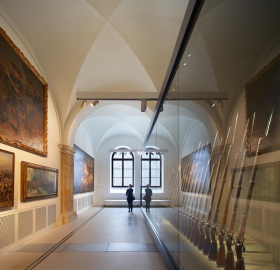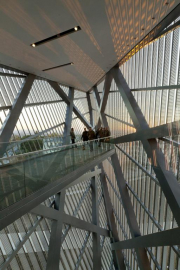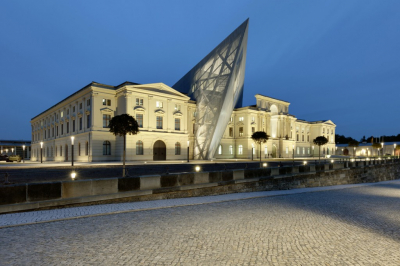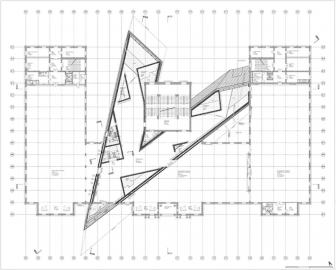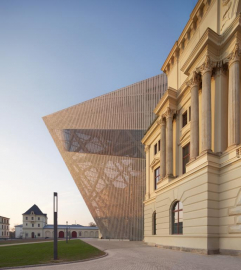Military History Museum
The Dresden Museum of Military History is now the official central museum of the German Armed Forces. It will house an exhibition area of roughly 21,000 m2, making it one of Germanys largest museums. The site including outside exhibition areas is 50,405 m2.
The armory, built in 1876, became a museum in 1897. Its location outside the historic center of Dresden made the building survive the allied bombing campaign at the end of World War II. The Minister of Defense of the German Government launched an architectural competition in 2001 for an extension that would facilitate a reconsideration of the way we think about war.
Daniel Libeskinds winning design boldly interrupts the original building s symmetry. The extension, a massive, five-story wedge of concrete and steel, cuts through the former armorys structural order. A 25m high viewing platform provides breathtaking views of Dresden while pointing towards the area where the firebombing of the city began, creating a dramatic space for reflection.
The new façades openness and transparency contrasts with the opacity and rigidity of the existing building. The latter represents the severity of the authoritarian past while the former reflects the openness of the democratic society in which it has been reimagined.
Inside, in the original, columned part of the building, Germans military history is presented in chronological order. It is complemented by new exhibition areas in the new wide-open spaces of wedge.
The sustainable aspects of the Museum include:
Sandwich facade elements with excellent thermal insulation.
Aluminum screen facade as a shading elements.
High Performance glass facade.
Cold light in the exhibition areas reducing the heat load.
All ventilation systems with heat recovery.
Cooling system with heat recovery.
Exterior exit stair in place of interior pressurized exit staircase

